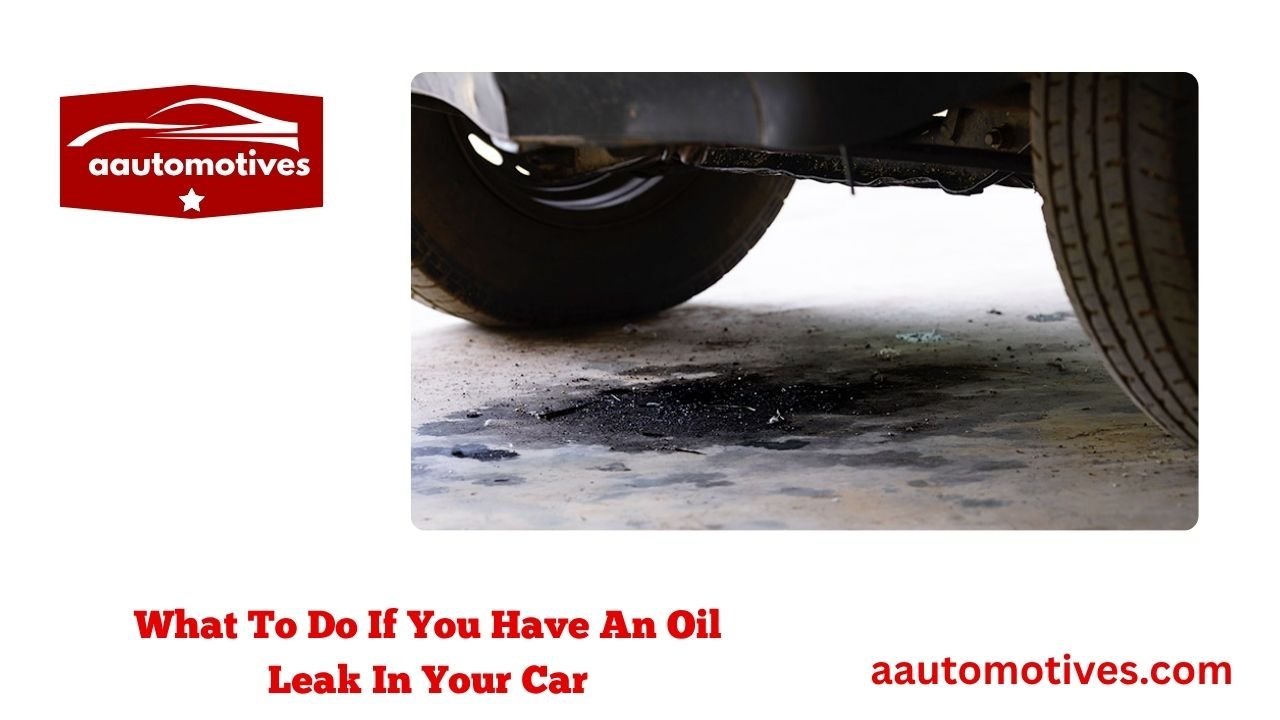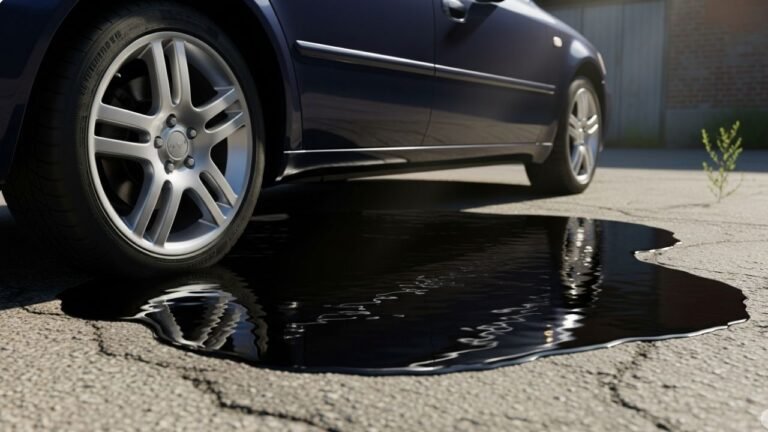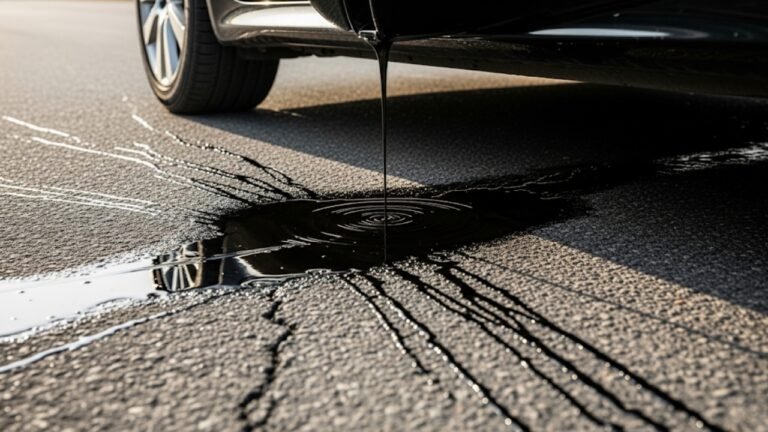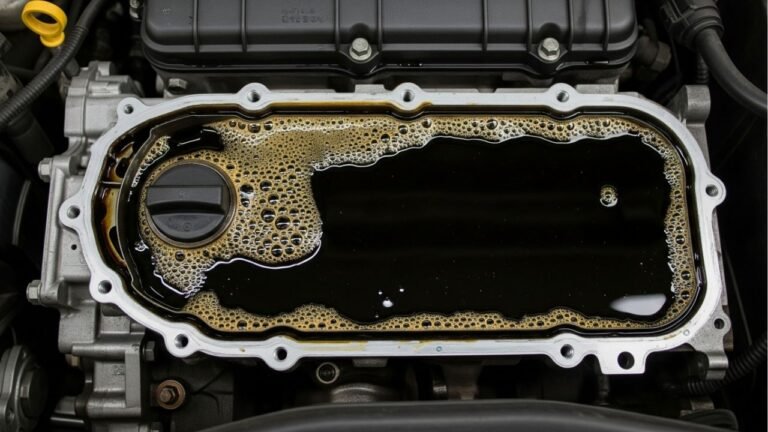What To Do If You Have An Oil Leak In Your Car

So, you just walked up to your car and noticed a dark puddle right beneath it. First, don’t panic—it’s something many of us have faced. I remember the first time it happened to me. I had just gotten out of a coffee shop, ready to hit the road, when I saw the stain of doom under my vehicle. My heart sank. I instantly thought, “Is my engine dying? Will this cost me a fortune?”
The truth is, an oil leak in your car isn’t always a disaster—but it should never be ignored.
In this guide, I’ll walk you through what to do if you have an oil leak in your car, step by step. Whether you’re a seasoned driver or new to the road, this guide will help you stay safe, avoid damage, and maybe even save some money. We’ll use real talk, relatable stories, and expert insight to make everything crystal clear.
Let’s get rolling.
In This Article
- 1 Step One: Confirm That It’s Actually an Oil Leak
- 2 Step Two: Check Your Oil Level Immediately
- 3 Step Three: Try to Locate the Source of the Leak
- 4 Step Four: Temporary Fixes (If You Can’t Get to a Mechanic Right Away)
- 5 Step Five: When to Visit a Mechanic (Hint: Sooner is Better)
- 6 Step Six: How to Prevent Oil Leaks in the Future
- 7 Personal Lessons: Mistakes I Made So You Don’t Have To
- 8 Quick-Glance Table: Common Oil Leak Causes & What to Do
- 9 Emotional Support: It’s Okay to Feel Overwhelmed
- 10 FAQs About What to Do If You Have an Oil Leak in Your Car
- 10.1 1. Can I drive my car with an oil leak?
- 10.2 2. How much does it cost to fix an oil leak?
- 10.3 3. What does leaking oil smell like?
- 10.4 4. Is it dangerous to ignore an oil leak?
- 10.5 5. Can I fix an oil leak myself?
- 10.6 6. What causes an oil leak in the first place?
- 10.7 7. How long can I go before fixing it?
- 10.8 8. Are oil leak stop additives safe?
- 11 Final Thoughts: The Long-Term Strategy
Step One: Confirm That It’s Actually an Oil Leak
It might sound obvious, but you’d be surprised how often people confuse other fluids with engine oil. I once thought my car had an oil leak, only to find out it was just water from the AC.
Here’s how to tell if the leak is actually engine oil:
-
Look at the color: Oil is usually brown or black. Fresh oil is lighter. If the liquid is green, pink, or orange, it’s probably coolant or transmission fluid.
-
Feel the texture: Engine oil feels slick and greasy.
-
Smell it: Burnt oil has a strong, acrid smell.
You can also try this simple method: Slide a clean white napkin or tissue under the car where the puddle is. Leave it for a few hours. If the stain is dark and greasy, you’ve likely got an engine oil leak.
Table: Comparing Car Fluids That Leak
| Fluid Type | Color | Smell | Texture |
|---|---|---|---|
| Engine Oil | Brown/Black | Burnt, oily smell | Slick, greasy |
| Transmission Fluid | Red/Pink | Sweet-ish | Smooth, slippery |
| Coolant | Green/Orange | Sweet | Watery, slightly sticky |
| Brake Fluid | Clear/Yellow | Sharp, chemical | Oily but thin |
| Water (AC) | Clear | None | Watery |
If you’ve confirmed it’s oil, we move on to the next step.
Step Two: Check Your Oil Level Immediately
Before anything else, pop that hood. It doesn’t matter if you’re not “car-savvy”—this part’s easy.
Here’s how I do it:
-
Turn off your engine and let it cool for 10 minutes.
-
Pull out the dipstick (usually has a yellow or orange handle).
-
Wipe it clean with a cloth.
-
Insert it back fully and pull it out again.
-
Check where the oil level lands between the “min” and “max” marks.
If it’s dangerously low, top it off with the right kind of oil for your car. You’ll find that info in your owner’s manual or inside the hood.
I once ignored this step, thinking, “Eh, I’ll fix the leak later.” Big mistake. The oil level dropped too low, and my engine started knocking. Don’t make that mistake—low oil can destroy your engine.
Bullet Points: What Happens if You Keep Driving With an Oil Leak?
-
Engine overheating
-
Increased wear and tear
-
Potential engine seizure
-
Expensive repair bills
-
Possible fire hazard (yes, really!)
So yeah, always check the level first.
Step Three: Try to Locate the Source of the Leak
Now that you’ve confirmed the problem and topped up your oil (if needed), it’s time to play detective. Finding the source of an oil leak might sound like something out of a car mechanic thriller, but it’s doable—even for beginners.
Common oil leak sources:
-
Oil pan gasket – One of the most frequent offenders
-
Valve cover gasket – Especially on older cars
-
Oil filter – Could be loose or improperly installed
-
Oil drain plug – Sometimes not tightened after an oil change
-
Rear main seal – Harder to fix, often requires professional help
Here’s what you can do:
-
Park on a clean driveway or lay cardboard under the engine.
-
Leave it overnight.
-
Check where the oil lands.
If it’s near the front, it might be the valve cover or oil filter. If it’s toward the back, maybe the oil pan gasket. Don’t be afraid to get your hands a little dirty. Grab a flashlight and check under the car.
Pro tip? If everything looks grimy and covered in oil, clean it with a degreaser, run the engine, and re-check in a few hours. The fresh leak will show up clearly.
Step Four: Temporary Fixes (If You Can’t Get to a Mechanic Right Away)
Sometimes life doesn’t give you the luxury to head to a mechanic immediately. Maybe you’re on a road trip, or maybe it’s a holiday and everything’s closed. Whatever the case, there are a few quick fixes you can try to slow the leak down.
I’ve personally used oil stop leak additives, and while they’re not magic potions, they do help in minor gasket leaks. These additives work by softening rubber seals, reducing seepage.
Other emergency tricks:
-
Tighten the oil drain plug: Carefully, without over-torquing.
-
Replace a loose oil filter: If it’s easy to access.
-
Use engine degreaser and a flashlight: Clean the area and look again.
-
Carry extra oil: Just in case you need to top off during a drive.
Keep in mind—these are temporary fixes. Think of them like putting a bandage on a cut. They help for a while, but you still need a real solution.
Step Five: When to Visit a Mechanic (Hint: Sooner is Better)
Now, if you’ve done all the above and the leak persists—or gets worse—you need to see a professional.
Here’s when you definitely need a mechanic:
-
Oil is leaking fast and forms large puddles quickly
-
You see smoke or smell burning oil
-
You’ve topped up oil multiple times within a week
-
Engine starts making strange noises
-
Oil warning light comes on
The cost will depend on the part that’s leaking. Small leaks might cost $100–$300 to fix. Bigger ones, like the rear main seal, could go upwards of $800.
But trust me on this—waiting too long will cost more. I once delayed a small valve gasket repair, and it ended up wrecking other engine components. What would’ve been a $150 fix turned into a $1000 nightmare.
Step Six: How to Prevent Oil Leaks in the Future
Once you’ve fixed the current problem, let’s make sure it doesn’t come back to haunt you. Like they say, prevention is better than cure—especially when it comes to your car’s engine.
Here are a few simple ways I personally use to keep oil leaks away:
-
Change your oil on time: Old oil turns acidic and damages seals.
-
Use high-quality engine oil: Don’t go for the cheapest bottle on the shelf.
-
Replace worn gaskets and seals: Especially if your car is over 100,000 miles.
-
Check under your car regularly: A 10-second glance can save you hundreds later.
-
Inspect your oil filter and drain plug after each oil change.
-
Don’t ignore strange smells or engine warning lights.
After my second oil leak scare, I started keeping a little “car health log” in my glove box. I noted every oil change, mechanic visit, and even odd smells. It may sound nerdy, but it’s saved me from bigger issues.
Personal Lessons: Mistakes I Made So You Don’t Have To
Look, I wasn’t always car-savvy. When I got my first car, a used Honda Civic, I didn’t even know how to check oil. One time, I ignored a burning oil smell for three weeks because I thought it was “just the engine warming up.”
Big mistake.
Eventually, my car started stalling at stoplights, and the engine temp gauge shot up. I pulled over, checked the oil—it was bone dry. Turns out, the valve cover gasket had been leaking slowly for months.
That repair cost me $720.
So, here’s my heartfelt advice: trust your gut. If something smells off, sounds weird, or feels different, get it checked. Even if the car is still running “fine,” a small leak today can become a blown engine tomorrow.
Quick-Glance Table: Common Oil Leak Causes & What to Do
| Leak Location | Likely Cause | What to Do |
|---|---|---|
| Near front of engine | Valve cover gasket | Inspect/replace gasket |
| Under oil pan | Oil pan gasket or plug | Tighten plug or change gasket |
| Around oil filter | Loose/old oil filter | Replace or retighten |
| Back of engine | Rear main seal | See a mechanic ASAP |
| Whole engine greasy | Multiple minor leaks | Clean engine & monitor |
Use this table to quickly identify what you’re dealing with and how urgent it might be.
Emotional Support: It’s Okay to Feel Overwhelmed
Let’s take a moment to talk feelings—yes, even with cars.
Car trouble can be emotionally exhausting, especially if it hits you when you’re broke, busy, or on the way to an important event. I’ve been there—once on the way to a job interview, I noticed my oil light flickering. I felt helpless, angry, and embarrassed all at once.
You’re not alone.
Mechanical issues like an oil leak in your car aren’t a reflection of your intelligence or your worth. They’re just part of owning a car—like a cold is part of being human. What matters most is how you respond, not how much you know going in.
Lean on friends, YouTube, or forums. Ask questions. Get a second opinion. Don’t let a leaky gasket mess with your confidence.
FAQs About What to Do If You Have an Oil Leak in Your Car
1. Can I drive my car with an oil leak?
Yes, but only for short distances and only if the oil level is safe. Driving long-term with a leak risks severe engine damage.
2. How much does it cost to fix an oil leak?
It ranges from $50 to $1200, depending on where the leak is. Simple leaks like a loose plug are cheap. Rear main seals? Not so much.
3. What does leaking oil smell like?
It usually smells burnt or bitter, especially when it drips onto hot engine parts.
4. Is it dangerous to ignore an oil leak?
Yes. Low oil can destroy your engine, and leaks near hot components might even cause a fire.
5. Can I fix an oil leak myself?
You can fix minor leaks, like tightening an oil filter or replacing a drain plug washer. Bigger repairs? Better left to a mechanic.
6. What causes an oil leak in the first place?
Most often: worn gaskets, loose oil filters, damaged pans, or old engine seals.
7. How long can I go before fixing it?
As little as a day, depending on the leak. If you’re topping off oil often, don’t wait.
8. Are oil leak stop additives safe?
They’re generally safe for temporary use, especially on older vehicles. But they’re not a permanent fix.
Final Thoughts: The Long-Term Strategy
Dealing with an oil leak in your car can feel like a small crisis. But with the right mindset, some basic knowledge, and a dash of patience, you’ll get through it. Think of this as part of your journey as a car owner—just another life skill to master.
I’ve gone from being someone who didn’t know where the dipstick was to someone who now checks my oil every two weeks, helps friends diagnose leaks, and confidently talks to mechanics.
You can get there too.
So next time you spot a puddle under your car, don’t stress. Breathe. Check. Act. Fix. Prevent. That’s your roadmap.






